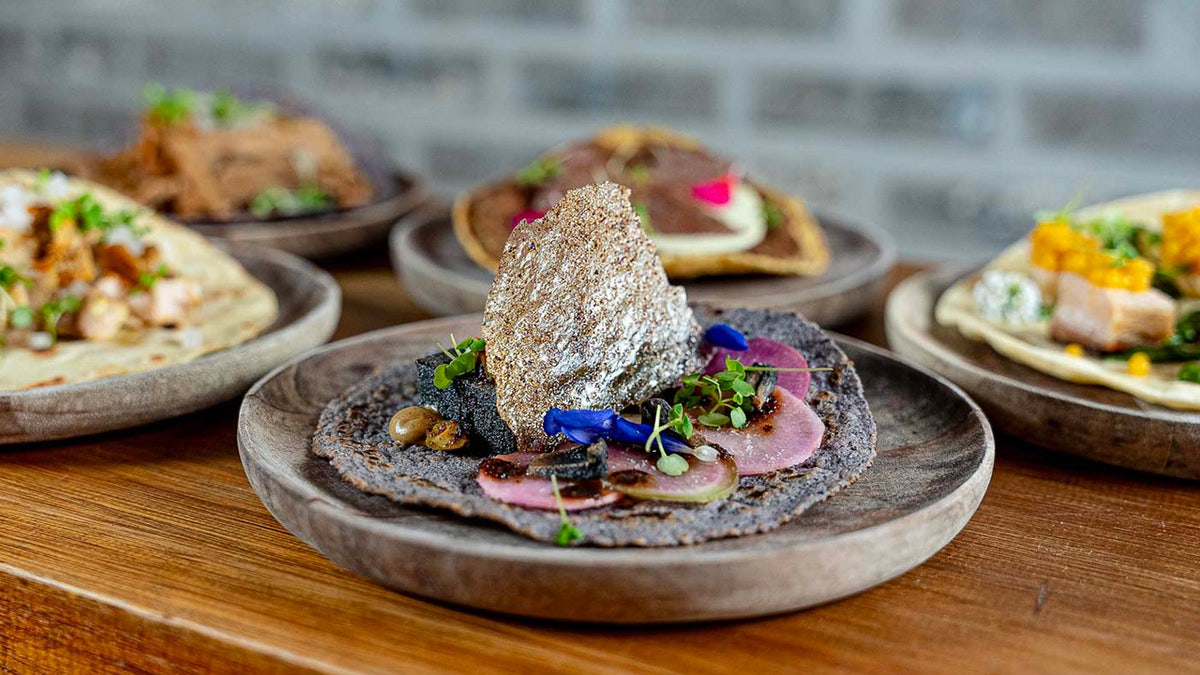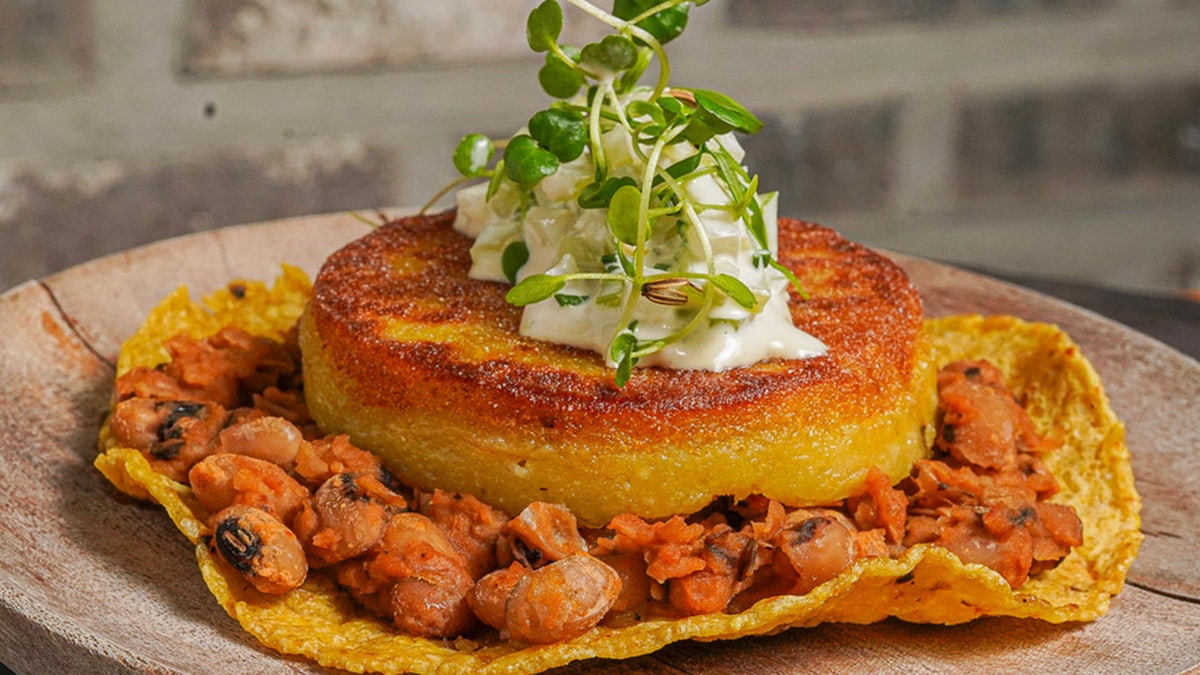May 5, 2024:
Chef Scott Koshnoodi of New York celebrates Cinco de Mayo by reaching deep into Aztec culinary tradition.
He then recreates the indigenous food of Mesoamerica with magic he learned at the forefront of modern molecular gastronomy.
Koshnoodi is chef-owner of Parklife, a modern taquería with multicultural influences, in Brooklyn.
MEXICAN BEER THE MOST POPULAR IN US: CINCO DE MAYO WILL FIESTA TO THE FLAVOR OF THESE CINCO CERVEZAS
He says the two worlds of the Aztec Empire — centered 600 years ago in what’s now Mexico City, and contemporary New York City — are not as distanced by culinary time and space as they may seem.
“Our ancestors were more in tune with the world around them and smarter than people today give them credit for,” Koshnoodi told Fox News Digital in a phone interview.

A vegetarian taco at Parklife, a modern, multicultural taquería in Brooklyn, New York. (Carnsmedia)
Koshnoodi in the early 2000s was a star chef at WD-50 restaurant on Manhattan’s Lower East Side.
WD-50 was one of the toughest tables in town for scoring a reservation and helped to popularize molecular gastronomy.
TAMALES ARE HOT TODAY, YET SAVORY WRAPS ARE AS OLD AS CIVILIZATION
It’s a sophisticated style of cooking that “relies on chemistry to create unexpected dishes that push the boundaries of traditional food,” writes MasterClass.com.
Molecular gastronomy sparked a sensation as the most progressive restaurant trend in the United States.
The culinary “alchemy” that wowed the food world at the time, the chef said, was actually nothing new.
He proves it with his menu at Parklife today.

A print by Gallina depicting Aztecs making bread, left. Parklife, a taquería in Brooklyn, New York, uses a traditional Aztec technique to make its masa dough, then turns it into sophisticated modern Tex-Mex fare, including this version of Frito pie, right. (Historical Picture Archive/CORBIS/Corbis via Getty Images; Carnsmedia)
The eatery’s house-made masa uses a traditional method of chemical transformation that dates back to Mesoamerican cultures.
The Aztecs, among the last of them, ruled an empire for centuries before Spanish explorers arrived in the 1500s.
LIVER, INSECTS, SARDINES – OH MY!: 8 ‘GROSS’ FOODS THAT NUTRITIONISTS SAY YOU SHOULD EAT
They soaked dry corn with limestone, the chef said, before cooking and grinding it to make dough for tamales, tortillas and other corn-based breads.
The Aztecs probably didn’t know the molecular science behind the process. But they knew the results.
“The added alkalinity does many things,” said Koshnoodi.

Scott Koshnoodi, chef owner of Parklife, a modern taquería that employs traditional Aztec techniques, in Brooklyn, New York. (Carnsmedia)
“It allows the husks to be released from the corn easier, and it adds a lot of niacin. The dough becomes more pliable and more delicious.”
The team at Parklife soaks corn kernels in Mexican Cal, a form of hydrated lime, for 24 hours before grinding the corn with lava rocks.
CLICK HERE TO SIGN UP FOR OUR LIFESTYLE NEWSLETTER
The masa is used to make taco shells, nacho chips and Parklife’s signature blue-corn tortillas.
Koshnoodi’s cuisine is influenced by more than just Mexico: It’s influenced by his cultural home, Iran, and the U.S. state of Texas where he was raised.

Smoky potato salad from Parkllife, a modern taquería in Brooklyn, New York. (Carnsmedia)
Parklife’s chef-driven version of casual Tex-Mex classic Frito pie is made with beef-and-potato chili, adobo, escabeche and queso chips.
Carnitas tacos are made with pecan-smoked pork shank; the bones are cooked into a broth to add moisture.
CLICK HERE TO GET THE FOX NEWS APP
Koshnoodi expresses his Persian roots and his experience with molecular gastronomy in Parklife’s lamb Biryiani taco.
The star ingredient is dramatic sumac glass.
It’s made from a sumac tea transformed through the magic of molecular gastronomy into a sleek solid crisp that looks like glass.
For more Lifestyle articles, visit www.foxnews.com/lifestyle.


























